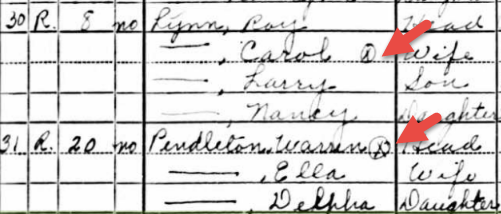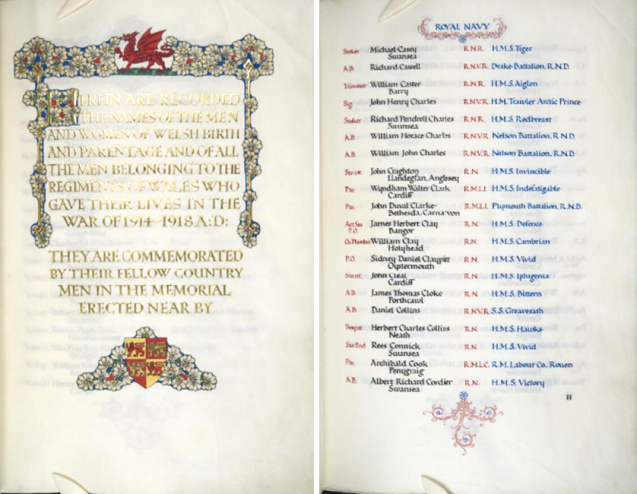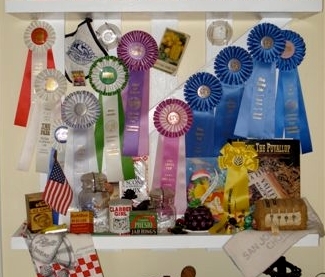Blog


Understanding Genealogy Sources: Why “Provenance” Matters
Before you rely on any genealogical sources for your family history research, you should know their provenance. Ask these questions about the records you find—and you’ll better understand the source and what it may (or may not) be telling you.
In the art world, knowing the provenance of a piece is crucial to understanding its value. Provenance looks at an object’s origins, history, and ownership. These can shed light on whether the piece is authentic. In other words, it tells us whether it truly was created by the attributed artist in the stated timeframe. It also provides insight into the value of the item.
Genealogical sources: Why provenance matters
The principle of provenance is true for genealogical sources, too. Records created at the time of an event by eyewitnesses are generally much more credible. Documents created in places associated with your relatives, by people who knew them, are much more likely to pertain to them (rather than to other folks by the same name). The same holds true for objects that are passed down through the family. Therefore, whether you’re looking at a family Bible or a typescript of a reminiscence you find online, it’s important to learn as much as you can about it so you know how much to trust it.
Questions to ask about your genealogical sources
What type of document or item is it? When was it created?
The nature of an object or record can often tell you something about its history or credibility. In the case of a photograph, we might ask these questions:
- What type of photograph is it? (tintype, carte de visite, Polaroid, etc.)
- Is there printing or writing on the back of the photo?
- If it’s a studio portrait, is the studio’s name and location identified?
For example, this photograph is a daguerreotype. It is a type of image taken on a silver-coated copper plate. Photo expert Maureen Taylor says these types of photos were in most use from 1839 to about 1865. You can learn additional clues from Maureen about using hairstyles, fashions, and other clues in the actual image in her book, Family Photo Detective.
Perhaps you have a manuscript in your grandma’s handwriting. Is it a diary or an autobiographical sketch? Is it dated or signed? Is it an original or a photocopy?
You will likely date these items, associate them with specific relatives, and judge the reliability of their contents based on answers to questions like these.
If a document isn’t identified, study it closely for clues as to what it is. Contributing Editor Sunny Morton has spent a lot of time studying old diaries and life story writings. Here are some tips from her on understanding them:
- Diaries and journals were created gradually over time. You may see date headers before some entries and changes in the handwriting or ink. Entries often focus more on the present or immediate past than the deep past and they wouldn’t reveal future events because they hadn’t happened yet.
- Autobiographical sketches or reminiscences may or may not be labeled and dated as such. These were usually written much later in someone’s life, often over a short period of time. The writer’s tone may be more formal, introspective, defensive, or self-conscious as she reflects on the past.
Look at all other documents and items that are associated with the source in question. For example, not long ago I received a box of old family items from my sister-in-law. The box originally belonged to my mother-in-law (Pat) and held an eclectic mix of mementos. One item of particular interest was a Guest Book sporting a cover made of wood. I immediately understood the significance of the cover because my father-in-law (Bill) had worked his entire career in the forest products industry. But that didn’t mean that the book actually belonged to my in-laws. Further examination was required.
Before removing the book from the box, I made note of what was tucked in around it. Perhaps all of these items were unrelated, or perhaps they had all come out of the same closet. Slow and careful examination is key identifying all the potential clues about the item.
It took several hours of reading through the various entries to determine that the Book was given to Pat and Bill as a gift by Pat’s parents. It contained many original signatures acquired over many years from a wide range of friends and family.
If you’re looking at digitized records online, read the description of the record collection. If you’re in an archive, read the finding aid or other collection description. (Genealogy Gems Premium subscribers can learn more about using finding aids in Genealogy Gems Premium Podcast episode #149.)
Records or artifacts may come with dates or timeframes associated with them. Sometimes there is no date or only a rough range of possibilities. You may have to rely on clues from several sources to date the item and match it up with your family history timeline. For example, this quilt was found in a suitcase in my Grandmother Pauline Moore’s closet after her death with this note pinned to it.
She says in the note that it was made by her mother before her stroke, which occurred in the 1960s. Based on the flour sack fabrics, I would date it more in the range of 1925-1945. It’s possible that she may have hung on to all these scraps and made it later in life. But I know from past conversations with my grandmother that most of her mother’s quilting was done in the earlier timeframe. Adding strength to my theory is a dress that hangs in my laundry room. I inherited the dress from my grandmother years ago. I have photos of her wearing it in the pre-World War II era. It contains some of the exact same fabric that makes up the quilt.
Finally, with documents especially, consider whether you’re looking at the original version, meaning the first format it ever took. Whenever possible, consult the original. Indexes, typed-up copies, or abstracts are convenient reference tools. In some cases, they are the only versions you’ll be able to access. However, they may not be as complete or accurate. Handwritten copies of older originals may have been made in the days before photocopying technology.
Here’s a digital copy of a 4-page family history written by Sunny’s great-aunt Lena Hall (1903-1981). Sunny received this copy from her mother. The title “as told by” at the beginning hints that this is a typed version of an oral history. If an original audio taped version still exists, Sunny doesn’t have it. So in this case, this is the best version she can get.
When was it written? A note at the end simply says the document was “copied by a niece” in 1987. It was created after 1950 because Aunt Lena names that as the year her father died. Aunt Lena states that her parents now had “25 grandchildren, 58 great-grandchildren, and 4 great-great-grandchildren.” Studying a complete family tree in descendancy view would likely reveal when her parents had only four great-great grandchildren—perhaps the best way to date this document.
If you can’t identify or assign a rough date to an artifact, consult a professional historian, genealogist, appraiser, or others with knowledge of particular documents or objects.
Where was it created and where has it been kept over the years?
Sometimes, family history sources are labeled with place names, like the city stamped on the front of an old photographic studio portrait. These can help you connect them with your family—or confirm that they don’t pertain to your family.
Where the source has been kept over time, and who has kept it, is an important part of provenance. For example, last summer, I was given this camera by my uncle.
He said it was originally owned by my grandma, Alfreda Louise Burkett. Much to our delight, we discovered that the camera had unexposed film inside! I scurried off to a few local stores, and quickly learned that the film pre-dated the current standard 35mm film, and they couldn’t process it. As I mentioned before, there are times when you will need to consult an expert, and this was one of them. Google led me to a specialty photography store about an hour from my home. It also served up this website which revealed that the camera type (Kodak Senior Six-20) was produced from 1932-1937.
The knowledgeable folks at the photography store connected me with a highly specialized film developer in Colorado. I’ve sent the film for processing. They told me the film type (C-22) can be dated to pre-1970s. This time frame makes sense: my grandma passed away in 1986.
As long as it has taken for this camera to make its way to me, I’m going to have to wait a little longer to see what the roll of film reveals. There is so little of this film still in existence that it can take up to 18 months for the developer to collect enough of it to warrant a processing run. When the happy day arrives that the photos appear in my mailbox, I’m optimistic that the images will further help me narrow down the timeframe between the 1930s and the 1970s when they were taken.
This chain of ownership—from my grandma to her son to me—is strong and reliable, based on my confidence in my uncle’s memory and honesty. This makes me more confident that the pictures inside that camera will be of my family. Stay tuned, because I will surely share the outcome here on the blog.
Why was it created?
The original purpose of a source is highly relevant to how much faith you put in its contents. For example, a woman might have altered her testimony in divorce proceedings in an effort to minimize damage to her own reputation and future. A man filling out his draft registration paperwork may have lied about his age or citizenship, either to avoid military service or in order to be included despite being under age. And most certainly newspaper articles may be filled with a variety of biases by the author, publisher, or those being interviewed. Give careful thought to these possible motivations when evaluating the contents of records.
Does it appear to be complete?
Whenever possible, consider a source as a whole. It’s tempting to want to zero in on the paragraphs or photos that interest you most, but you may miss out on important information that changes what this source has to tell you. The specific placement of a photo in an album can be as significant as the printed photographic image. A photo’s position can indicate the relationship of the people in the photo to others on the same page, or the timeline of events.
Take note if any part of the source appears to be missing or illegible, especially if it appears that some of it has been deliberately removed, erased, or crossed out. You may be able to make more sense of the partial information—or take a guess at why it was removed—as you learn more about the family. (My grandma’s diaries from the 1930s gave me insight into this photo!)
There may be a perfectly innocent reason for the change. But you may also be seeing evidence that someone who wanted to erase unpleasant memories or conceal a scandal.
Who was the informant?
The informant in any record is the person who supplied the information. Sometimes this is the same person who created a record, such as the writer of a diary. In the case of a U.S. census, the informant is the person in a household who told the census enumerator about the people who lived there. In most cases, it’s impossible to know who the informant was. Thankfully in 1940, census enumerators were instructed to mark the informant with a circled “X,” as shown in these two households.
Remember that a source may have multiple informants, who would have been in the best position to provide certain kinds of information. Below is the death certificate for Mary Mollie Overbay, beloved grandma and hero of Genealogy Gems contributing writer Margaret Linford. (Read more about her here.) In this death certificate, Informant #1 reported the deceased’s personal information, and would typically have been a close relative. Informant #2 provided the medical particulars relating to the death, and would typically have been the attending physician.
What primary and secondary information is revealed in this record?
Historical evidence can either be considered primary or secondary information. Genealogical scholar Thomas W. Jones defines these terms in his book, Mastering Genealogical Proof:
- “Primary information is that reported by an eyewitness. Primary information often was recorded soon after the event, but it may be reported or recorded years or decades later.
- Secondary information is reported by someone who obtained it from someone else. It is hearsay.”
The same document can include both primary and secondary information (which is why we now talk less about primary and secondary sources and more about information). On the death certificate above, Informant #1 shares the deceased’s last name, so was likely a relative. He likely had first-hand knowledge of the deceased’s marital status, spouse’s name, and occupation. If Informant #1 was the deceased’s father, he would also likely have provided primary information relating to the deceased’s birth, place of residence, and parents’ names. Secondary information he reported would include his own birthplace (as father) and that of his wife (since he presumably wasn’t present for it). If Informant #2 was the deceased’s attending physician, he would have provided primary information about the deceased’s immediate and contributing causes of death.
How do all these clues add up?
It’s clear that as genealogists our goal is not only to evaluate each family history source, but also each piece of information it provides. We need to scrutinize it from many angles and make some judgments. Asking the right questions helps us ultimately answer the all-important question: how much do you trust what this record is telling you?
Next steps: Keep learning
Is there more to do after you review a family history artifact or record and extract every piece of information from it? You bet! Create a research plan that will help you find other records to verify or shed additional light on the information in the document. For example:
- If you’ve got a death certificate, look for other death-related records, such as an obituary, tombstone inscription, and funeral home records.
- Follow up on additional leads provided in the source. A death certificate sometimes mentions a Social Security number or military service, both of which have their own paper trails.
If you’re new to research plans or looking for a way to take them paperless, you’ll find detailed answers in my video class “Using Evernote to Create a Research Plan.” The video and handout download are available to Genealogy Gems Premium Members.

About the Author
Lisa Louise Cooke is the Producer and Host of the Genealogy Gems Podcast, an online genealogy audio show and app. She is the author of the books The Genealogist’s Google Toolbox, Mobile Genealogy, How to Find Your Family History in Newspapers, and the Google Earth for Genealogy video series, an international keynote speaker, and producer of the Family Tree Magazine Podcast.
Disclosure: This article contains affiliate links and Genealogy Gems will be compensated if you make a purchase after clicking on these links (at no additional cost to you). Thank you for supporting Genealogy Gems!

Mayflower Ancestors and More in New Genealogy Records Online
Discover your Mayflower ancestors–or more about your family history from around the world–in new and updated genealogy records online. Among them are the Welsh National Book of Remembrance for WWI and various records for Indiana, Massachusetts, Montana, Ireland, New Zealand, Sweden and Venezuela. Also: all Missouri adoptees may now order original birth certificates.
United States: Discover Your Mayflower Ancestors
In anticipation of the 2020 commemoration of the 400th anniversary of the Mayflower’s voyage, the New England Historic Genealogical Society (aka AmericanAncestors.org) has launched a new website, Mayflower 2020. This interactive website features the world’s first online gathering of Mayflower descendants, along with in-depth information about Mayflower passengers and their family trees, resources for finding Mayflower ancestors, and information on “Mayflower 2020” announcements and events.
The National Library of Wales has published online the Welsh National Book of Remembrance for the First World War. According to the NLW website, the book “contains the names of 35,000 servicemen and women, as well as members of Welsh Regiments, who lost their lives in the First World War. These individuals are listed according to regiment and battalion alongside the names of those who might well have died alongside them.” The original gilded volume contains about 1,100 pages of names, with about 40 names scripted in calligraphy on each page. The commemorative book was created as a “roll of honor” and companion to the Welsh National War Memorial in Cathays Park, Cardiff, which doesn’t include names of the deceased on it. Search or browse the gorgeous volume at the National Library of Wales digital archive.
U.S. state-level genealogy collections
Indiana. Over a million records appear in MyHeritage’s new collection, Indiana Newspapers, 1847-2009. According to MyHeritage, “This collection is a compendium of newspapers published in various cities and towns in the state of Indiana from the 1840s until 2009. Newspapers are an important resource for genealogy and family history research as they contain obituaries and other vital record substitutes such as birth, marriage, and death notices. Additionally, society pages and stories of local interest contain rich information on activities and events in the community and often provide details about the persons involved.”
Massachusetts. New at AmericanAncestors.org is Suffolk County, MA: Probate File Papers, with nearly 22,000 Suffolk County probate cases (1630-1800). According to the site, “The probate cases include wills, guardianships, administrations, and various other types of probate records. The complete Suffolk County File Papers collection will eventually cover cases 1-94,757, which includes all years through 1892. The cases are indexed chronologically, which allows us to present them in sections while digital photography occurs. Photography is expected to continue through 2020. We will add cases as they become available.”
Missouri. A new Missouri law, the Missouri Adoptee Rights Act, now gives all adoptees access to their original birth certificates. Adoptees born prior to 1941 were already eligible to request copies of their original birth certificates as of mid-2016. On January 1, 2018, this right was extended to adoptees born in or after 1941. According to a local news report, the state representative behind the new law, Don Phillips, is himself an adoptee and was among the first to receive a copy of his own certificate when the new rules went into effect recently. If you would like to order a non-certified copy of an original birth certificate from the Missouri Bureau of Vital Records, click here to fill out the online application.
Montana. Ancestry.com has published Montana Birth Records, 1897-1919. The collection includes birth certificates that typically include the following information: name, gender and race of child; date and place of birth; and parents’ names, ages and birthplaces.
Free on FamilySearch: More global genealogical records
FamilySearch is always free, so take a quick peek at the newly-indexed names added to the following collections. Maybe your ancestors’ names have finally appeared!
Ireland. Look up your Irish ancestors in Ireland Civil Registration, 1845-1913. More than 653,000 names have been added.
New Zealand. Nearly a million indexed names have been added to New Zealand, Civil Records Indexes, 1800-1966. Search this index to official government records of births, marriages and deaths. Tip: see the collection description for important information about ordering copies of original records.
Sweden. Over 36 million indexed names have been added to a mammoth collection of digitized record images in Sweden, Household Examination Books, 1880 – 1920. Other Sweden collections have been updated at FamilySearch, as well: Sweden, Göteborg och Bohus Church Records, 1577-1932; index 1659-1860, Sweden, Kopparberg Church Records, 1604-1900; index 1628-1860 and Sweden, Västernorrland Church Records, 1501-1940; index 1650-1860.
Venezuela. Nearly 800,000 indexed names have been added to Venezuela, Archdiocese of Mérida, Catholic Church Records, 1654-2015. These parish or diocesan records include “baptisms, confirmations, parish censuses, marriages, pre-marriage investigations, marriage dispensations, deaths, and indexes.”
Get the most out of FamilySearch.org
Of all the “Genealogy Giants” we cover in-depth here at Genealogy Gems, FamilySearch is the only one that’s totally free. It’s also an enormous site with multiple places to search for your ancestors’ names in old records and even additional resources for finding offsite or even offline records you want. So it’s worth a little investment to learn how to use FamilySearch effectively. For that, we recommend Unofficial Guide to FamilySearch.org by Dana McCullough. In it, you’ll find step-by-step strategies for searching their millions of historical records and family trees, and how to maximize all the site’s valuable resources.

Sunny Morton
Sunny Morton is a Contributing Editor at Lisa Louise Cooke’s Genealogy Gems; her voice is often heard on the Genealogy Gems Podcast and Genealogy Gems Premium Podcast. She’s especially known for her expertise on the world’s biggest family history websites (she’s the author of Genealogy Giants: Comparing the 4 Major Websites); writing personal and family histories (she also wrote Story of My Life: A Workbook for Preserving Your Legacy); and sharing her latest favorite reads for the Genealogy Gems Book Club. Sunny is also a Contributing Editor at Family Tree Magazine and the NGS-award-winning Co-Editor of Ohio Genealogy News.
Disclosure: This article contains affiliate links and Genealogy Gems will be compensated if you make a purchase after clicking on these links (at no additional cost to you). Thank you for supporting Genealogy Gems!
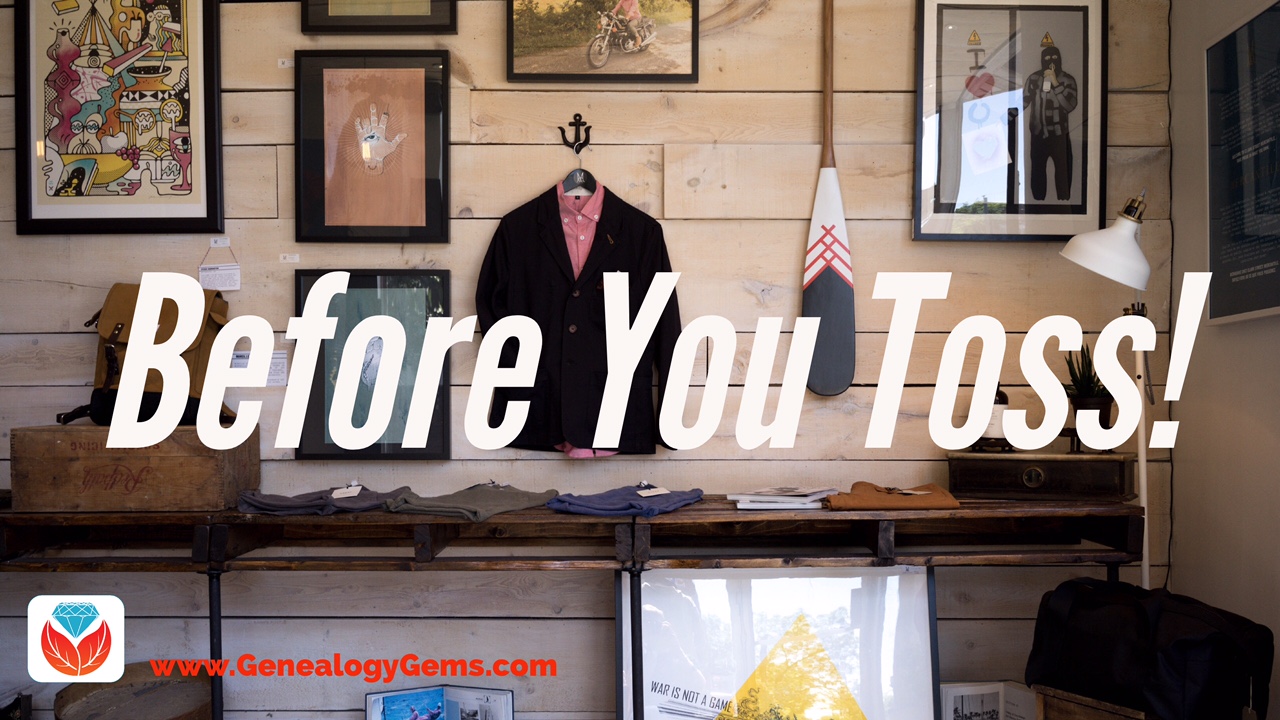
Declutter Your House: 3 Questions for the Family Archivist
To declutter your house, you may have to ask yourself hard questions–especially if you’re the family archivist. Is that old apron or state fair ribbon just clutter or is it history? If it’s a nice piece of history but you can’t keep it, where can you donate it? Professional archivist Melissa Barker takes on these important questions for genealogists.

Before you declutter your house, ask yourself these 3 questions.
1. Will this item help to tell my ancestor’s story?
So many of our ancestor’s stories have been lost to time or by people throwing things away. Many of the artifacts and memorabilia that we own help to tell our ancestor’s story. A first place ribbon from the State Fair where Grandma won for her apple pie recipe tells a story. Because Grandma won a ribbon, her pie was the best of all the pies submitted and she was a great cook! A great idea would be to keep the ribbon and write up a story about how she won the ribbon so that your descendants will have this story. A bonus would be if you have the actual apple pie recipe to put with the ribbon and story. If the item helps to tell your ancestor’s story, maybe it should be kept and preserved.
2. SHOULD I DONATE THE ITEM TO A LOCAL ARCHIVE?
Before tossing those genealogical records, photographs, or artifacts, consider contacting an archive where the family is from and see if they would be interested in the items. Many of our libraries, historical societies, genealogical societies, archives, and museums accept records donations to add to their collections. This way, if a researcher contacts or visits the archive and is researching the same surnames you are, they could benefit from the items you donate. Make sure to call ahead and find out if the archive takes donations and set a time to take your items to them. (TIP: Click here to see how to use ArchiveGrid to search for repositories in specific locations.)
3. ARE THE ITEMS VALUABLE?
Many times we don’t know the value of what we have in our genealogical collections. The value could be monetary and what we own could be worth money. It’s always a good idea to get objects and memorabilia appraised by an expert if you think they could have a monetary value. But maybe your items have historical value and if you toss these items, you would be throwing away history. Many genealogists have one-of-a-kind documents and artifacts that help to tell the story of an historical event. That event could have taken place at the local level, state level, or even the national level. Checking into the monetary value and historical value of an item before tossing it just might change your mind!
So, if you are considering cleaning out that closet and tossing items that you don’t think mean anything to anyone and are just taking up space, ask yourself these questions and make sure you are making the right decision.
Declutter your house by repurposing old family heirlooms
You can often transform the family “gems” from your piles or boxes of clutter into meaningful items to use or display. Get inspired by these upcycled heirloom projects:
 A New Heritage Quilt from Old Family Fabrics
A New Heritage Quilt from Old Family Fabrics
An Old Earring Gets New Life as a Wearable Conversation Piece
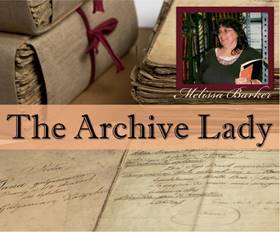
Melissa Barker
The Archive Lady
Melissa Barker is a Certified Archives Records Manager, the Houston County, Tennessee Archivist and author of the popular blog A Genealogist in the Archives and bi-weekly advice column The Archive Lady. She has been researching her own family history for the past 27 years.









